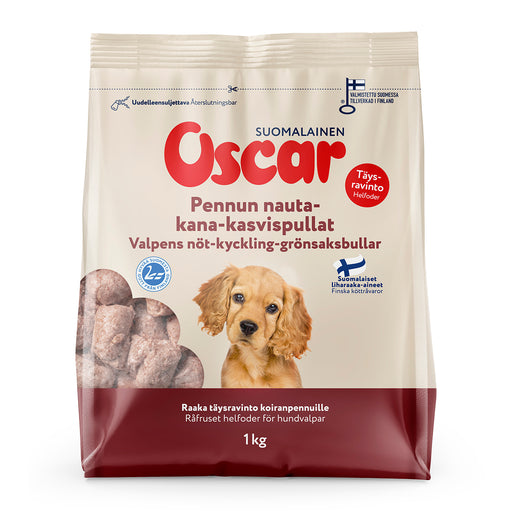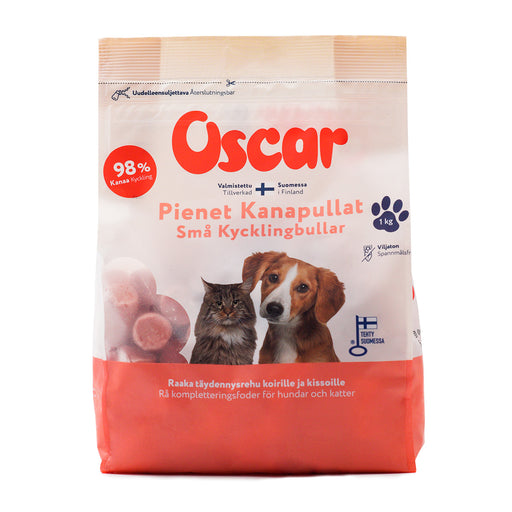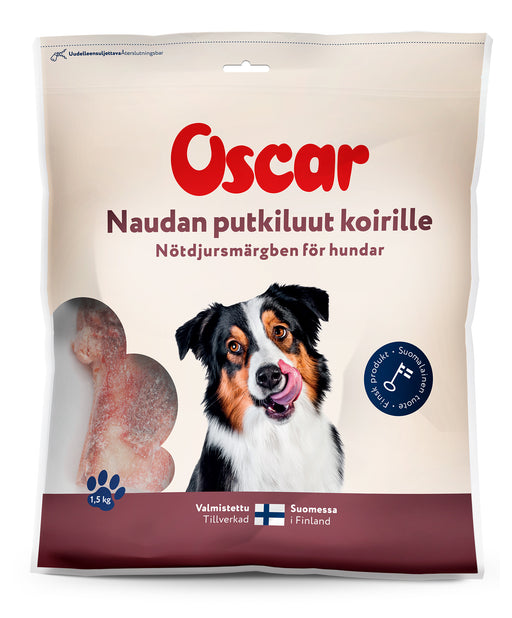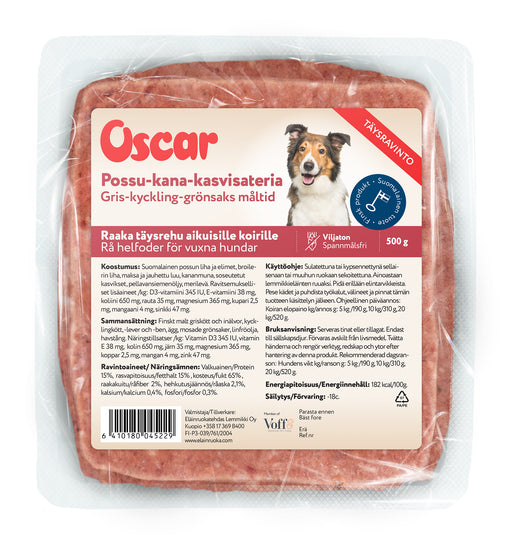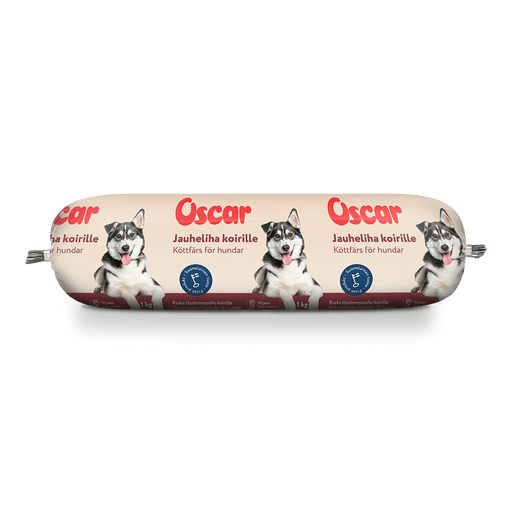Raw feeding of dogs is a regular topic of debate. We asked an expert on the issue of raw feeding of dogs what the studies say about the benefits and potential risks of raw feeding.
Johanna Anturaniemi is a doctor of agricultural and forestry sciences and a bachelor of veterinary medicine at the Faculty of Veterinary Medicine of the University of Helsinki, specialising in animal nutrition and researching raw feeding of dogs. She has been studying dog raw feeding and its benefits and risks for pets in the DOGRISK research group since 2008 and has completed her PhD thesis on dog raw feeding.
We asked Anturaniemi what the studies tell us about the benefits and potential risks of raw feeding.
What have been the most important findings of your research team in relation to raw feeding of dogs?
Epidemiological studies have shown a link between maternal gestation and the raw feeding of infant puppies and a lower incidence of atopy in adulthood. In addition, raw feeding during the puppy period also appears to be associated with a lower incidence of intestinal diseases in adulthood. I think these are very interesting results that would be great to replicate in a clinical feeding trial in the future.
So, to put it simply, puppies fed raw meat seem to have less atopic skin and intestinal symptoms as adults, according to studies? What other international studies have shown the benefits of raw feeding for dogs and cats?
There is still very little research comparing diets, but there are several studies comparing the digestibility of different food options. Raw food has all been shown to be more digestible than dry food, canned food or cooked food. So when you need a highly digestible food for your pet, raw food seems to be a good option.
A 2008 survey found that dogs that ate raw meat had significantly fewer ear infections, eye infections, urinary tract infections and skin infections than dogs that had never eaten raw meat.
Anti-inflammatory effects have also previously been seen in the blood gene function of raw meat-eating dogs, as we saw in the skin gene function in my own PhD study.
The prevalence of calcium oxalate stones, i.e. stones that precipitate in the bladder, has also been studied in dogs by comparing the feeding of dry and raw meat. The risk of calcium oxalate stones was significantly lower in those fed raw food. The effect of raw food is likely to be due to its lack of carbohydrate content and the moist nature of the food. Other studies have reported that low water content and high carbohydrate content of food are associated with calcium oxalate stones.
High-protein diets, such as raw feeding, have been shown to prevent struvite crystals, or urinary calculi and crystals, in cats.
Is raw feeding also suitable for puppies?
Raw food is also suitable for puppies, if you know how to put it together properly. Of course, raw feeding does not mean that the animal is fed only meat. The dog should be fed a wide variety of meat, offal and bone to meet its nutritional needs. This requires some familiarity with the subject. If you do not have the knowledge yourself, it is a good idea to seek professional help to ensure that your growing puppy does not suffer from any nutritional deficiencies.
What are the risks of raw feeding and what should you know if you start feeding your pet raw meat?
Raw meat always contains bacteria, which of course needs to be taken into account when handling and storing the food. So good kitchen hygiene is important. However, there is no evidence that raw food is a major health risk for dogs and cats.
Carnivores themselves are not susceptible to food-borne bacteria, and many perfectly healthy dogs carry salmonella and campylobacter, among other things, in their gut. If the animal's own immune defence is weak, it is possible that the animal is more susceptible to the bacteria found in raw meat, but it is very rare for a dog's diarrhea to be caused by a disease-causing bacterium. If an individual has a poor health condition or is on a particular medication, it is worth talking to your vet to see if these have an impact on feeding choices.
If the dog is not used to eating raw meat, start with small amounts. This is particularly important for puppies, but also for adult dogs. If the diet is suddenly changed drastically, the result is likely to be diarrhea, as the gut microbes have adapted to a completely different food. There is already a large body of research on the effect of diet on the gut microbiota in dogs, so it is clear that the gut microbiota must be given time to adapt to the new composition of the food.
What kind of raw food does your dog need from a nutritional point of view? Is minced meat for humans as good for pets as meat for raw feeding?
A pet's diet requires much more than just a packet of minced meat. Market meat sold as food is just meat without offal, which means that the dog is missing out on a lot of important nutrients. Market mince can of course be used as part of the diet, and you can easily find slightly leaner meat alternatives if you need them.
A lot of good would also be wasted in meat production if only what people in the West agree to eat themselves were used from our farm animals. Domesticity, proper storage and handling are important when it comes to raw food.
Do you feed your pets raw food?
Yes, I do, both cats and dogs.
Thank you for the interview, Johanna Anturaniemi!
Oscar meat products and feeds are produced at the Lemmik Animal Food Factory in Kuopio from domestic ingredients and are designed with pet nutrition in mind. The raw materials used often contain bone marrow, which is a good source of calcium, and organs, which provide the animal with important vitamins and minerals. The raw materials used in Oscar pet food are ecologically friendly, using by-products from Finnish food production that are not commonly used in food production. Lemmikki Animal Food Factory is the first Finnish animal food manufacturer to receive the FSSC 22000 quality certificate.
-
Oscar Beef-chicken-vegetable balls for puppies
OscarTranslation missing: en.product_price.item.price.range_htmlOriginal price6,59 €from 6,59 €Current price 6,59 €Complete meal for small and medium breeds puppies up to 6 months. Easiest way to feed balanced and natural raw food diet for your puppy. Fulfills p...
View full details -
Oscar Small chicken balls
OscarTranslation missing: en.product_price.item.price.range_htmlOriginal price6,29 €from 6,29 €Current price 6,29 €A very tasty raw complementary food from Finnish chicken, suitable for dogs and cats. The small ball size (approx. 10 g) is easy to digest and serv...
View full details -
Oscar Shinbones
OscarTranslation missing: en.product_price.item.price.range_htmlOriginal price 4,95 €Current price 2,48 €from 2,48 €Current price 2,48 €Raw frozen beef shinbones for dogs.
-
Leo & Wolf Pork-Chicken-Vegetable meal
OscarTranslation missing: en.product_price.item.price.range_htmlOriginal price 3,00 €Current price 1,50 €from 1,50 €Current price 1,50 €NOVELTY FOR EXPORT! Complete food for adult dogs.This Oscar complete meal makes a raw feeding as easiest as it can bee!Contains all the nutrients a...
View full details -
Oscar Ground Meat for Dogs
OscarTranslation missing: en.product_price.item.price.range_htmlOriginal price3,49 €from 3,49 €Current price 3,49 €Raw-frozen beef and pork for dogs.


